#coniferous juniper
Explore tagged Tumblr posts
Text

Rocks en Juniper - Torleiv Agdestein , 2019.
Norwegian . b. 1950s -
Oil on canvas , 60 x 73 cm.
#Torleiv Agdestein#norwegian artist#coastal landscape#sea rocks#coniferous bush#coniferous tree#juniper
134 notes
·
View notes
Text
we have 3 types of trees in the NJ pine barrens that are referred to as “cedars”
exactly 0 of them are true cedars and it makes me insane
#i’m making juniper syrup and thinking thoughts#and all 3 are different genera#they are all coniferous and in the cypress family#i know it’s a largely commercial thing#if someone wants a cedar chest they’re going to buy something out of ‘eastern red cedar’ and not ‘eastern juniper’#i just… hate not being precise because of the ‘tism is all#cedar#juniper#thuja#cypress#pine barrens
10 notes
·
View notes
Text
Eastern Redcedar
Eastern redcedar is actually a juniper. Like the majority of cedars, Eastern redcedar, Juniperus virginiana, is not really a ‘cedar’. According to its genus name, it is a juniper. That may be why it is less common here than within its native range. Even in its native range, most grow wild rather than in cultivation. Junipers gained an unfavorable reputation after becoming overly common decades…

View On WordPress
0 notes
Text
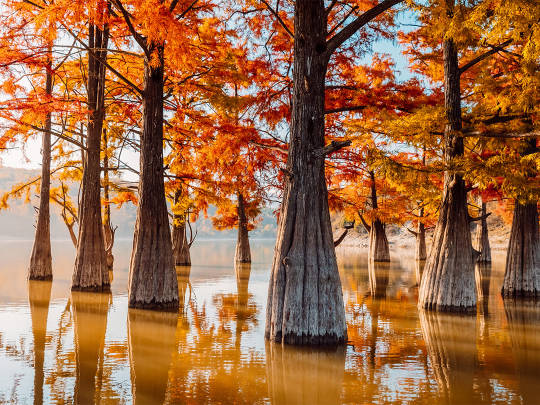

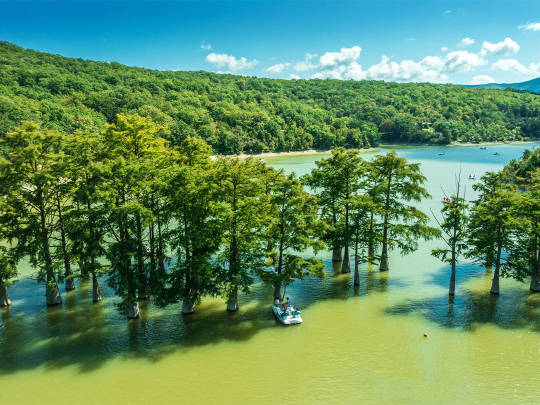
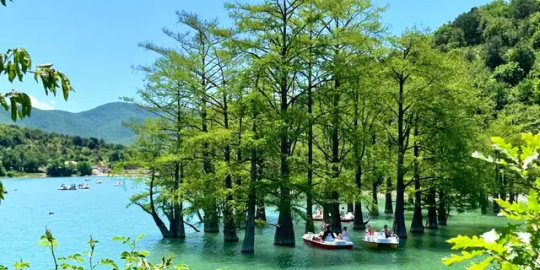








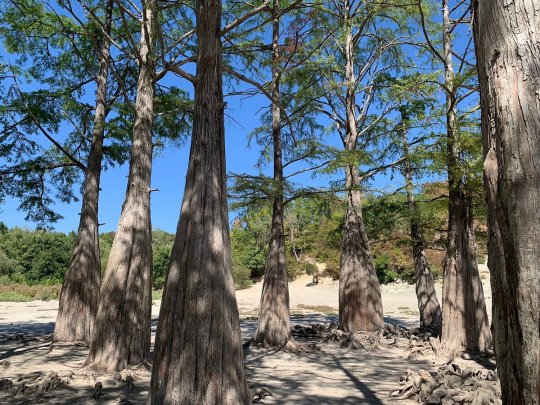


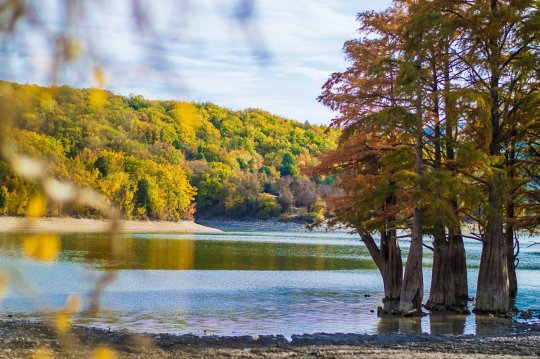







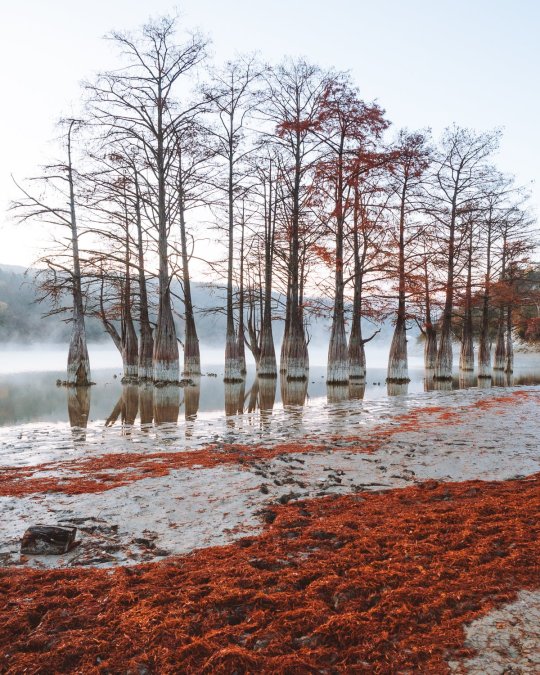
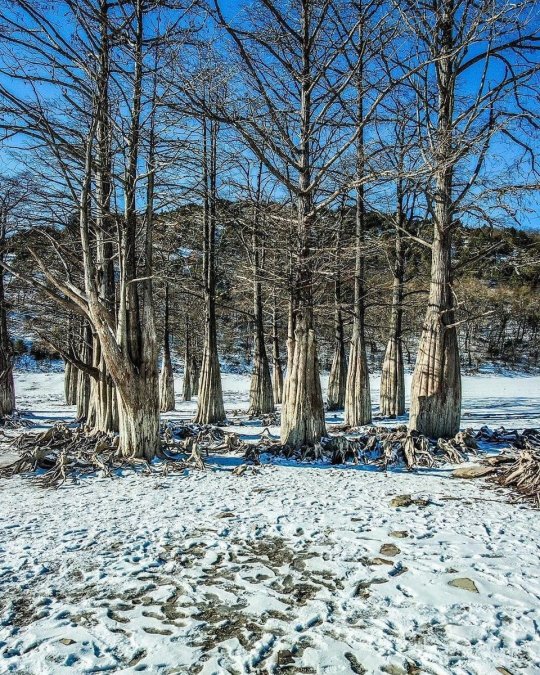
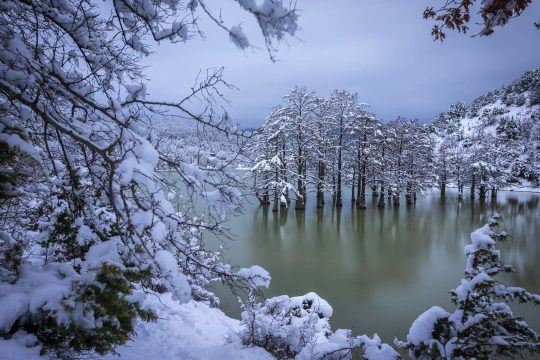
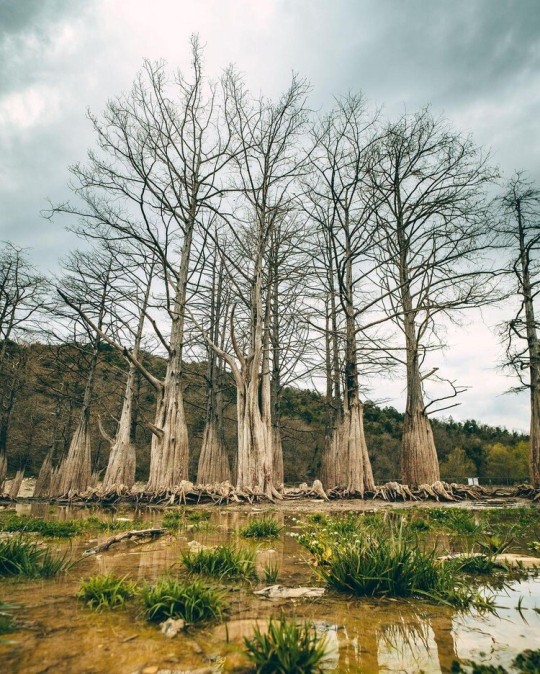
Озеро Сукко (Кипарисовое озеро), или Голубое озеро — одна из самых популярных и фотогеничных локаций в окрестностях Анапы. Удивительные деревья с узловатыми корнями и приятным смолистым ароматом растут здесь прямо из воды. О происхождении названия озера существует множество предположений. С адыгейского топоним можно перевести как «водоем кабанов». Существует также вариант трактовки «Сукко» как «су» — вода и «къко» – свинья или дельфин. Озеро в Сукко было создано искусственно путем строительства плотины на реке, впадающей в Черное море, что привело к затоплению долины. Этот водоем занимает площадь всего 8 гектаров. Высота Кипарисового озера - 40 м над уровнем моря. Особую известность озеру принес уникальный эксперимент, проведенный в 1934–1935 годах, когда были посажены 32 болотных кипарисов, которые успешно прижились и выросли. Изначально кипарисы были посажены на сухой земле, однако из-за значительных изменений рельефа территории они со временем оказались в воде. В периоды засухи уровень воды в озере понижается, обнажая обширную корневую систему деревьев. Кипарисы достигают внушительной высоты почти в 30 метров, а их стволы могут быть шириной до полуметра. Роща прекрасна практически в любой сезон: весной свежая листва хвойных деревьев нежно-зелёная, летом приобретает более тёмный и насыщенный оттенок, а осенью полыхает ярко-оранжевым или красным цветом. К зиме деревья полностью сбрасывают листву, обнажая ветвистые кроны — в чём тоже есть своя красота.
Из-за обилия известняковых отложений в зависимости от освещения озеро Сукко может менять цвет от нежного молочно-голубого до насыщенного бирюзового. Голубое озеро не только известно своими кипарисами и кристально чистой водой, но и окружающей его природой. Водоем находится среди лесопарка с дубами и грабами, а с северной стороны его окружают склоны горы Широкая. Рядом также расположена можжевеловая роща, создающая лечебный воздух в этой местности.
Lake Sukko (Cypress Lake), or Blue Lake, is one of the most popular and photogenic locations in the vicinity of Anapa. Amazing trees with knotty roots and a pleasant resinous aroma grow here directly from the water. There are many speculations about the origin of the name of the lake. From the Adyghe toponym can be translated as “pond of wild boars.” There is also an option to interpret “Sukko” as “su” - water and “kko” - pig or dolphin. The lake in Sukko was created artificially by building a dam on a river flowing into the Black Sea, which led to flooding of the valley. This reservoir covers an area of only 8 hectares. The height of Cypress Lake is 40 m above sea level. The lake became especially famous due to a unique experiment conducted in 1934–1935, when 32 swamp cypress trees were planted, which successfully took root and grew.Initially, the cypress trees were planted on dry land, but due to significant changes in the terrain, they eventually ended up in water. During periods of drought, the lake's water level drops, exposing the trees' extensive root systems. Cypress trees reach an impressive height of almost 30 meters, and their trunks can be up to half a meter wide. The grove is beautiful in almost any season: in the spring, the fresh foliage of coniferous trees is soft green, in the summer it acquires a darker and richer shade, and in the fall it blazes with bright orange or red. By winter, the trees completely shed their leaves, revealing branched crowns - which also has its own beauty.
Due to the abundance of limestone deposits, depending on the lighting, Lake Sukko can change color from delicate milky blue to rich turquoise. Blue Lake is not only famous for its cypress trees and crystal clear water, but also for the nature that surrounds it. The reservoir is located among a forest park with oaks and hornbeams, and on the northern side it is surrounded by the slopes of Mount Shirokaya. There is also a juniper grove nearby, which creates healing air in this area.
Источник: https://kukarta.ru/ozero-sukko,//ezhevika-travel.ru /tur/ozero-sukko-foto,/turistexpert.ru/rossiya/anapa/kiparisovoe-ozero/,//kiparisovoe-ozero.ru,/blijehotel.ru/articles/kiparisovoe-ozero/, /experience.tripster.ru/sights/kiparisovoe-ozero-sukko/, /www.tripadvisor.ru/Attraction_Review-g3226223-d2331079-Reviews-Sukko_Lake-Sukko_Krasnodar_Krai_Southern_District.html.
#Russia#Anapa#nature#nature aesthetic#landscape photography#nature photography#mountains#lake#Cypress Lake#Lake Sukko#trees and forest#cypress trees#blue sky#travel#wonderful#Россия#природа#Анапа#Пейзаж#озеро#Озеро Сукко#Кипарисовое озеро#горы#лес#небо#туризм#природнаякрасота
214 notes
·
View notes
Text
Warbler Showdown pt 2; Bracket 1, Poll 3
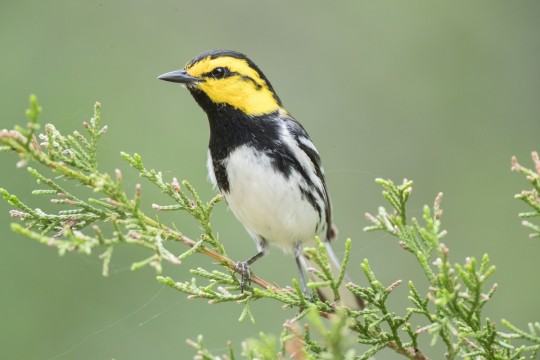
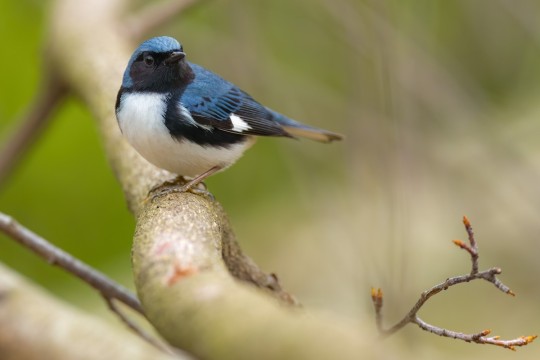
Golden-cheeked Warbler (Setophaga chrysoparia)
IUCN Rating: Endangered
Range: central Texas during the breeding season; overwinters in Central America- Guatemala, El Salvador, Honduras and northern Nicaragua.
Habitat: Old-growth and mature regrowth juniper-oak woodlands in limestone hills and canyons. Ashe juniper is a key tree species on the breeding grounds, as the bark is used in nest construction.
Subspecies: none
Black-throated Blue Warbler (Setophaga caerulescens)
IUCN Rating: Least Concern
Range: prefers the Appalachian mountains when in the eastern states, otherwise breeding in southeast Canada or New England. Overwinters in the Greater Antilles, as well as the Bahamas and along the Caribbean coast of the Yucatan, Belize, and Honduras.
Habitat: interior forests of undisturbed hardwood and mixed deciduous-coniferous trees.
Subspecies: 2
Image Sources: GCWA (Brendan Klick); BTBW (Matt Zuro)
#nww showdown#golden cheeked warbler#black throated blue warbler#setophaga#parulidae#passeriformes#ah... my two beloveds.... why must you fight...
173 notes
·
View notes
Text
What kind of alcohol would the AOT characters drink?


Eren, Armin, Mikasa, Jean, Connie, Sasha, Reiner, Annie, Bertholdt. (Part 1?)
TW: Alcohol is harmful to your health!

Eren: This fool is definitely insane, because he would drink gin. It doesn't matter in what form, cocktail, tonic, in its pure form. His passion is gin. Its excessive bitterness, coniferous aroma and notes of juniper with spices excite his receptors, which is why he loves this drink. (Fanfact, I hate gin, the nastiest alcohol after absinthe)
Armin: something light, like apple cider, wine or light beer, maybe even alcohol-free. He definitely does not tolerate alcohol well, so guys try not to pour this guy, because he always forgets his measure and gets drunk quickly, which is why he does rash things.
Mikasa: definitely an expensive dry red wine for meat and cheese. She likes to arrange such gatherings with Annie and Sasha, discussing what interesting things have happened these days, and what kind of fools their friends and boyfriends are. Mikasa personally goes to buy cheeses, camembert, brie, Cheddar, parmesan, maasdam, although she and Sasha mostly eat all the cheese.
Jean: Mmmm... everything? Depends on which company he's in. If he’s with guys, he doesn’t want to miss one other can of beer. In a restaurant with his woman? A couple of glasses of wine or a glass of single malt whiskey. In some interesting bar? He will definitely try some interesting unusual cocktail. Did he want to drink alone? He'll sit in the kitchen with the most normal whiskey he could find in the nearest store. But he definitely won't take something cheap.
Connie: Tequila and beer. Or ruff (a mixture of beer and vodka). This guy will definitely become addicted to alcohol as soon as he gets access to it, although he will be very upset when his mother finds him drunk and will be depressed by it herself. After that, he never came home drunk, and tried to stay with someone else. Because he drank well, and not always just for promotion. Vodka before beer sounds good, right?
Sasha: light beer and tinctures that her father taught her to make. Currant, raspberry, melon, cactus, cranberry, apricot, in general, everything that she found delicious, she tried to make tinctures, and they really came out cool and delicious. She brings her schmurdyak to girly gatherings, although in the end she also drinks wine, which she does not like at all.
Rainer: vodka or cognac. Sometimes he gets in the mood when he wants to get drunk, and he does it quickly and does not sit idly by. Even when he's with the guys, and everyone just brings beer, Rainer specially buys something stronger for himself separately (as a result, he has to share with those who ask, because they want something "more interesting and stronger").
Annie: she mostly drinks dry red wine with Mikasa, although she prefers some cocktails more, for example juice with vodka, or something fruity with syrups, like sex on the beach (and she vehemently denies that she loves this cocktail, although she is ready to drink a few if she has the opportunity).
Berthold: he drinks rarely and little, because he believes that it is pointless, because because of his large physique, and therefore his large weight, it is very difficult for him to feel the influence of alcohol, which is why he does not like it. He'll try a can of beer, and that's enough for him to realize that it's not interesting at all. But then he helps Rainer, who can sometimes overdo it.
#aot#attack on titan#shingeki no kyojin#jean kirstein#eren yaegar#eren jaeger#armin arlert#mikasa ackerman#connie springer#sasha braus#reiner braun#annie leonhart#jean kirschtein#aot headcanons#eren jaeger aot#armin arlert headcanons#Reiner Braun headcanons#bertholdt hoover#bertolt hoover#snk#snk armin#snk eren#snk jean#snk mikasa#snk reiner#snk connie#snk sasha#snk annie#snk bertholdt#jean kirschstein
54 notes
·
View notes
Text
Scents

dear friend @arklayraven got a question that was asking about their FO's scents/colognes. i love scents. I love blending them and creating things with them. So, I built off the ask and their ideas. ... and now I have to build cologne/perfume oil for everyone. lots of stuff beneath the fold that may or may not be interesting depending on how smell-oriented you are.

Scents - The brothers end up with two blends each. If you think I forgot anyone - no, I didn't. 💞

The Avatars
Lucifer – Sandalwood, white musk, vetiver, woody amber, chypre, white pepper, violet leaf. Blond wood, lilac fougere, black musk, red apple, bergamot, spiced amber, dark red wine reduction. Mammon – Oud, woody amber, shimmering adelhyde metal, sandalwood, yuzu rind. Patchouli, copal, sun-baked spices, resinous gold amber. Leviathan – Camphor, amber, labdanum, black pepper, violet, black musk Seafoam ambergris, sea salt musk, choya absolute, lichen, bergamot Satan – Green apple skin, Carmelite water, davana, frankincense, leather, tonka. Bitter almond, parchment, sandalwood, dust, faded incense, ancient leather. Asmodeus – Peach, honey, ylang ylang, rose, and a bit of dark musk. Patchouli, a hint of synthetic leather. Overripe cherries and dry champagne. Red musk and salt. Beelzebub – Skin musk, salt, oiled leather, thick spiced cream and hazelnut, amber, crushed grass, vetiver. Black musk, pepper, galangal, amber, cacao wood, balsam, coconut palm, toasted sesame.
Belphegor – Roman chamomile, cotton sheets, lavender, opium poppy, white musk, carrot seed Absinthe, opium, lilac blossoms, dragon’s blood resin, mandrake root, warm vanilla milk

The Royals
Diavolo – Cypress, sandalwood, lilac, smokey dark musk, tobacco leaf, neroli, spiced rum. Barbatos – A touch of a very proper old gentleman’s cologne, mixed with the scents of his day. Tonka, jasmine, lavender fougere, thyme, black tea, lemon rind, polished dark woods. Mephistopheles – Black amber, frankincense, lime, juniper berry, ambergris, sugary chai, ti leaf, soapy clean skin and starched cotton

The Angels
Simeon – Milk, wildflower honey, roses, champagne grape, olibanum, with a touch of opium poppy and black patchouli. Cacao, toasted cardamon, white sandalwood, myrrh, rose, burnt sugar, faded ritual incense, communion wine. Raphael – Vetiver, patchouli, orange flower, bergamot, copper, heliotrope, adelhyde geranium, blue musk, coniferous foliage. Luke – Rose geranium, pale white mint, orange blossom, rosemary, sugared hazelnuts, soft faded incense.

Misc. Thirteen – Something clashing and vibrant and sticky and bright, unsettling. Lemon blossom, sour apple gummy candy, hibiscus, lime, coconut water, blonde oak, calla lily, a touch of grave dust.

#obey me#obey me headcanons#obey me shall we date#what do demons (and others) smell like?#here's one idea#(or a lot)
14 notes
·
View notes
Text
October 14th, 2023


Superb Dog-day Cicada (Neotibicen superbus)
Class: Insecta
Distribution: Southern United States, from western Texas to Arkansas.
Habitat: Several types; coniferous and hardwood forests, arid shrublands and suburban areas.
Diet: Nymphs feed on sap from subterranean tree roots, while adults feed on xylem; observed to have a preference for oak and juniper trees.
Description: The superb dog-day cicada is one of the most recognizable of the dog-day cicadas due to their bright lime-green coloration. Unlike other closely related species, the superb dog-day cicada has a characteristic song that sounds like a series of rapid clicks coming up to a crescendo, giving the effect of a soft buzz.
These cicadas are dubbed annual cicadas because they appear every year. The female cicada lays her eggs in a tree branch, from which emerges the nymphs, which fall to the ground and tunnel to the tree's roots. These nymphs are adapted for underground life, with strong front limbs for tunneling. They spend multiple years underground before finally emerging as adults—their annual apparition is likely caused by overlapping generations.
(Images by Sloan Childers and Brandon Woo.)
59 notes
·
View notes
Text
Juniper
Ancient Mesopotamians believed juniper oil would ward off the evil eye. In Britain it was used in a similar way – hung over doorways on May Day Eve and burned at Halloween. Dreaming of gathering juniper berries in winter meant you would be prosperous.
10 facts about juniper.
2 notes
·
View notes
Text
Frederic Malle Hope

Nose: Dominique Ropion
notes: juniper, pink pepper; oudh, smoke, vetiver; leather, amber
Hope starts out as a big, high-quality skanky amber; masculine, rich and warm, a touch fruity, with the oudh coming through as a distinctly horsey undertone that I find darkly attractive.
In less than five minutes the amber sweetness has burned away and what we have is a cooler, smokier oudh with a bit of that "medicinal" or "coniferous" quality. The juniper note comes through here too.
This second stage almost feels cologne-y, albeit a very smoky, dark, saturnine take on cologne; we've passed through the nightclub into the office. An unusual trajectory, but I imagine it's clever marketing: the sexy opening gets your wallet out, the more restrained drydown means you won't regret wearing it to a meeting.
Is it original? Nah, there are a bajillion very similar oudhs out there and the price is outrageous. But: does it spark joy? Does it smell good? Yes. There's something compelling and alive and, yes, sexy here. It's a low-key aura of mystery.
6 notes
·
View notes
Text
All About Juniper Berries
Juniper trees are coniferous evergreens in the Cypress family, and juniper berries are not actual berries but however are seed cones produced by a variety of juniper trees.

Most juniper species produce safe and edible juniper berries, such as:
Juniperus communis (Common Juniper)
Juniperus deppeana (Alligator Juniper)
Juniperus californica (California Juniper).
Some species such as Juniperus sabina (Savin Juniper) produce highly toxic juniper berries and should not be consumed. Always do your research!
How To Forage:
Juniper berries ripen for 2-3 years. They are ready to pick when the tree has a large amount of ripe, mature berries that are blue in hue. You will more commonly find trees ready for picking in the fall and winter.
Flavor Profile and Benefits:
Juniper berries are known for their usage in gin! They have a somewhat sweet, “evergreen” flavor that is very unique and can be used in a multitude of different recipes. Benefits include:
Vitamin C
Antioxidants
Anti-inflammatory benefits
Strong anti-fungal and antibacterial properties
Great source of natural yeast
12 notes
·
View notes
Text
Juniper sloan is fake. You want to know why? Legsworth? FAKE.
Oh but it's fictional-
I'm not finished
Juniper has constantly been compared to a fish. What happens to fish? They get eaten or die and decompose. And turn into something else. Meaning they don't technically exist anymore. All there is is bones
Think about it. Juniper didn't want to deliver fish because he's a fish
Sydney and Rowan could have been hallucinating Juniper and Jedidiah could have just been playing along out of awkwardness, him being the bone in the fish scenario. SO Juniper is not real.
OH BUT WHAT ABOUT THE KIDS?
Simple. The bonfire got to them. That or they wanted to humor Sydney and Rowan. Or we could go the imaginary friend route
"Junipers are coniferous trees and shrubs in the genus Juniperus (/dʒuːˈnɪpərəs/ joo-NIH-pər-əs)[1] of the cypress family Cupressaceae. Depending on the taxonomy, between 50 and 67 species of junipers are widely distributed throughout the Northern Hemisphere, from the Arctic, south to tropical Africa, throughout parts of western, central and southern Asia, east to eastern Tibet in the Old World, and in the mountains of Central America. The highest-known juniper forest occurs at an altitude of 4,900 metres (16,100 ft) in southeastern Tibet and the northern Himalayas, creating one of the highest tree lines on earth.[2]"
Notice how it says Old World? Juniper is not from this world. Never will be. Even if you try to make him
Also
He's British
I've never seen a real British person
6 notes
·
View notes
Text
Warbler Showdown pt 2; Bracket 2, Poll 3


Black-throated Gray Warbler (Setophaga nigrescens)
IUCN Rating: Least Concern
Range: typically breeds west of the Rockies, from lower British Columbia to the very northern edge of Mexico (mostly there in Baja California). Overwinters in Baja California Sur, as well as the Pacific slope of Mexico, sometimes along the interior of the country as well.
Habitat: found in open coniferous or mixed coniferous-deciduous woodlands with brushy undergrowth, as well as pinyon-juniper and pine-oak; this is true for breeding, migration, and winter habitats.
Subspecies: 2
American Redstart (Setophaga ruticilla)
IUCN Rating: Least Concern
Range: quite extensive; breeds throughout most of Canada and the northern states, then migrates through the central and Eastern states before overwintering in the Caribbean, and from southern Mexico to northern South America (Ecuador to eastern Venezuela).
Habitat: moist, deciduous, second-growth woodlands with abundant shrubs, as well as thickets found in treefall gaps of old-growth forests. Sometimes classified as a "forest generalist", especially with their diverse overwinter habitats, with habitat depending more on the specific local of the population.
Subspecies: none
Image Sources: BTYW (Mason Maron); AMRE (Matt Felperin)
13 notes
·
View notes
Text
Prefix: Juniper-
A brown or grey cat.

Description: three types of juniper are native to Michigan. Common juniper, creeping juniper, and red juniper, also known as eastern redcedar, are three closely related species of small, coniferous evergreen shrubs and trees with fibrous brown bark. Common juniper and red juniper both grow upright while creeping juniper grows only a few inches tall and spreads out over the ground. Additionally, common junipers have whorls of sharp, needle-like leaves while creeping junipers and red junipers have whorls of scaly leaves. They all have waxy blue seed cones and yellow-brown pollen cones, and junipers are typically dioecious with seed cones and pollen cones growing on different trees. The seed cones, known as juniper berries, are an important winter food source for birds, which disperse the seeds in their droppings.
1 note
·
View note
Text
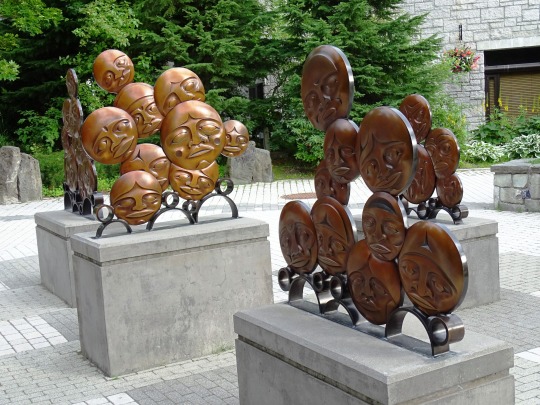


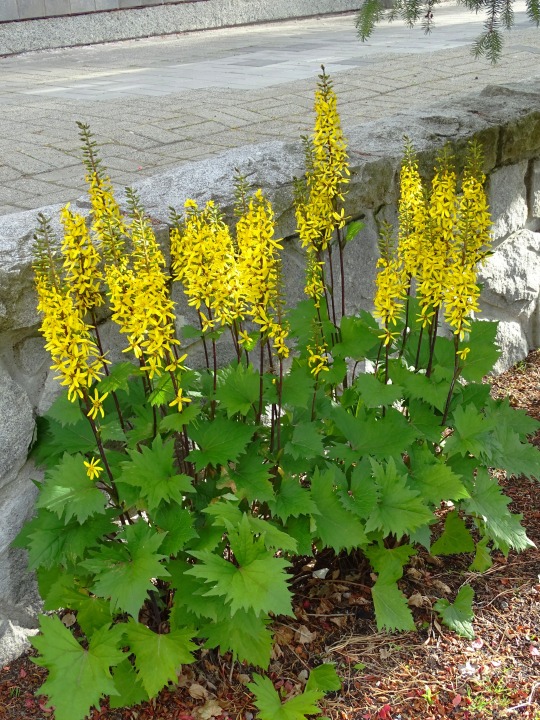




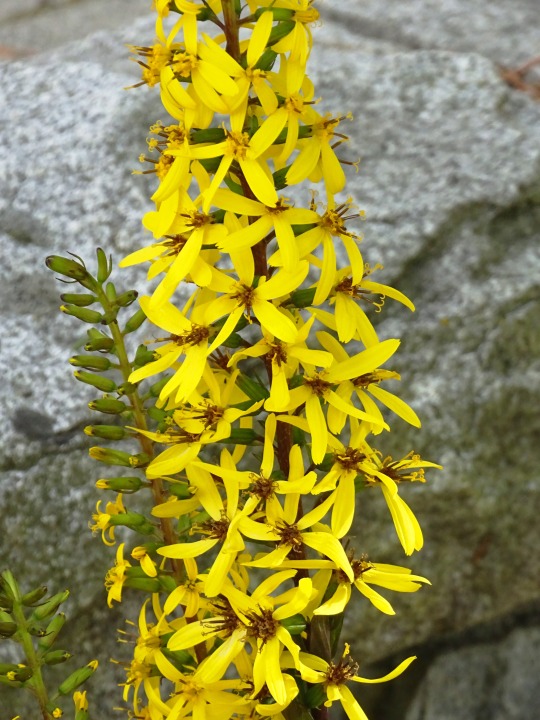
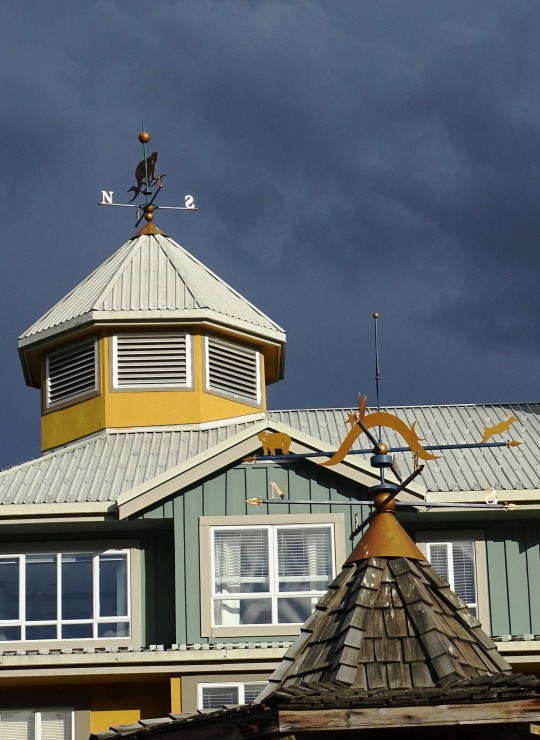
Whistler, BC (No. 6)
Whistler is a collection of microclimates ranging from coniferous mixed forest on the valley floor, to slightly drier slopes, to Alpine tundra in the alpine.
The wet West Coast marine temperate climate in the valley floor is characterized by a coniferous mixed forest, with a preponderance of western red cedar—a continuation of the rainforest of the Pacific Northwest.
The slopes are slightly drier and are also coniferous mixed forest with western hemlock (Tsuga heterophylla) and mountain hemlock (Tsuga mertensiana), Whistler hybrid spruce (Sitka spruce and Engelmann spruce). The last is "a hybrid spruce that is unique to Whistler, aptly dubbed the "Whistler Spruce." The Whistler spruce hybrid is indicative of Whistler's geographic position—we're not quite coastal, but not quite interior". A hybrid of the wetter West Coast Sitka spruce (Picea sitchensis) – that ranges from Northern California to Alaska and the drier Interior Engelmann spruce (Picea engelmannii). Others include the Douglas fir (Pseudotsuga menziesii), lodgepole pine (Pinus contorta), endangered whitebark pine (Pinus albicaulis).
The higher slopes transition to many species of scrub juniper, Rocky Mountain Juniper (Juniperus scopulorum), and many species of scrub willow in the genus Salix at the tree line, and to Arctic tundra like conditions in the high alpine above the tree line.
Source: Wikipedia
#A Timeless Circle by Susan Point#Bear Affection by Mike Tyler#travel#original photography#vacation#tourist attraction#landmark#landscape#clouds#nature#cityscape#flora#Canada#summer 2023#British Columbia#countryside#forest#tree#Whistler#woods#fir#pine#Coast Mountains#Pacific Ranges#small town#architecture#flower
2 notes
·
View notes
Text


I finally got to making designs for Juniper's siblings, Cypress and Sequioa. There is a family of coniferous plants called cypressaceae which includes cypress trees, sequioa trees, and juniper bushes which is where I got the names for all the siblings.
Cypress repairs robots, and Sequioa is a stay at home dad who also does freelance art. He has a daughter named Azalea.
2 notes
·
View notes